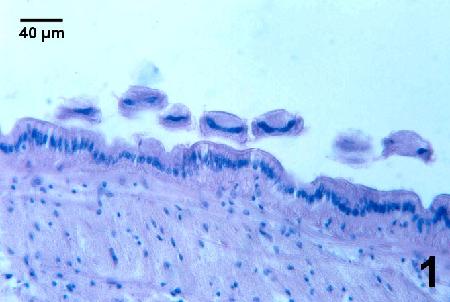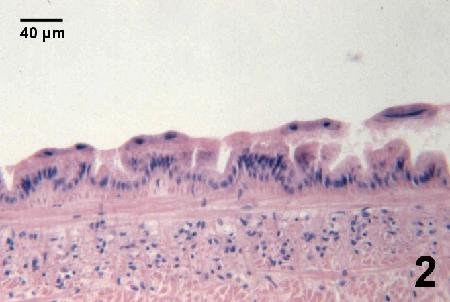Gill Trichodina of Clams and Cockles
On this page
Category
Category 4 (Negligible Regulatory Significance in Canada)
Common, generally accepted names of the organism or disease agent
None.
Scientific name or taxonomic affiliation
Trichodina spp., other unidentified trichodinid ciliates.
Geographic distribution
Cerastoderma (=Cardium) edule, Cardium lamarcki, Mya arenaria, Macoma baltica and Tapes philippinarum as well as other marine bivalves including oysters and scallops.
Host species
Crassostrea angulata and Crassostrea gigas (cultured in France). Similar clinical signs reported in Ostrea edulis but not identified as the same disease which afflicts C. angulata.
Impact on the host
Although prevalences can reach 100% in some populations, most infections are innocuous. Intensity of infection is usually low with ciliates attached to, or located near the mantle, along the siphon, or gill surface. Heavy infections in C. edule less than one year old were associated with emaciation and mortalities in the German and Dutch Wadden Sea.
Diagnostic techniques
Wet Mounts
Helmit shaped ciliates that swim through the sea water like flying saucers or adhere to the glass surface like a suction cup can be observed in scrapings of the mantle cavity lining or inside the siphons (100 x). For specific identification the specimens must be properly stained (using silver impregnation techniques).
Histology
Disc-shaped protozoa (about 30 to 50 µm in diameter) characterized by a circlet of eosinophilic denticles, ciliary fringes, and a horse-shoe shaped macronucleus.

Figure 1. Trichodina sp. adjacent to the epithelium lining the inner surface of the siphon with no evidence of associated pathology. Haematoxylin and eosin stain.

Figure 2. Trichodina sp. attached to the epithelial cells lining the inner surface of the siphon with no evidence of associated pathology. Haematoxylin and eosin stain.
Methods of control
No known methods of prevention or control.
References
Bower, S.M., J. Blackbourn and G.R. Meyer. 1992. Parasite and symbiont fauna of Japanese littlenecks, Tapes philippinarum (Adams and Reeve, 1850), in British Columbia. Journal of Shellfish Research 11: 13-19.
Lauckner, G. 1983. Diseases of Mollusca: Bivalvia. In: O. Kinne (ed.). Diseases of Marine Animals. Volume II: Introduction, Bivalvia to Scaphopoda. Biologische Anstalt Helgoland, Hamburg, p. 593-598.
Citation Information
Bower, S.M., McGladdery, S.E., Price, I.M. (1994): Synopsis of Infectious Diseases and Parasites of Commercially Exploited Shellfish: Gill Trichodina of Clams and Cockles.
Date last revised: Fall 1994
Susan Bower
- Date modified: